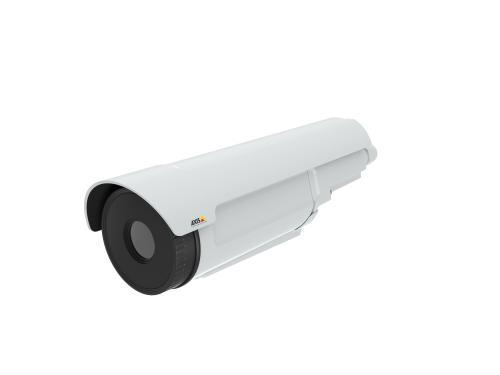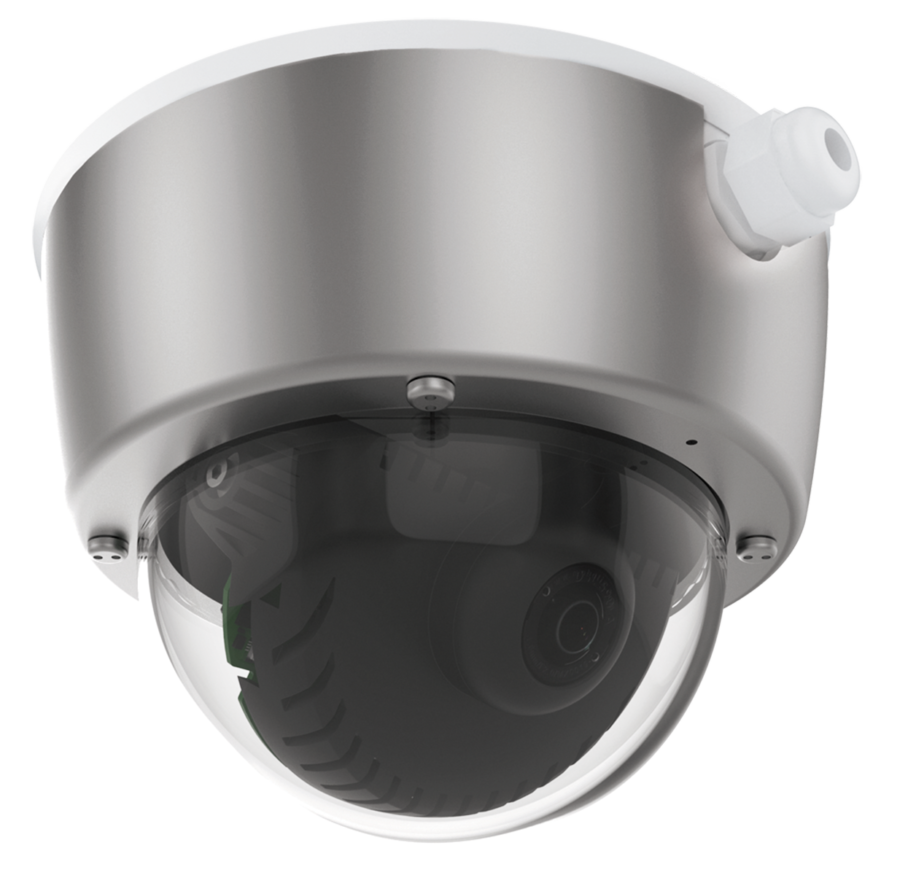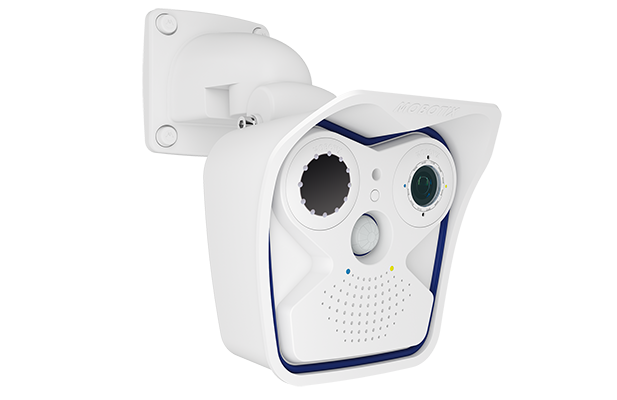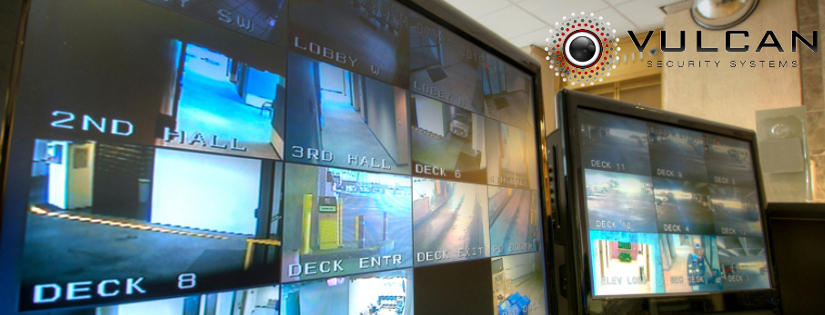As a result of advances in security camera technology, a custom video surveillance system can be built to meet any type of business environment and strategic need. Sometimes, the scope of camera technology can seem overwhelming (we can help, by the way).
In this article, we take a big-picture look at the different security camera options currently on the market and suitable for the typical business, manufacturing, or commercial real estate environment.
The focus is on megapixel cameras that are built on open technology interfaces (rather than proprietary systems) and suitable for IP (internet protocol) networked systems.

Let’s start with look at the foundational differences in security cameras:
Analog or Megapixel Cameras
We have previously written about the difference between digital and analog technology.
Standard resolution security cameras typically feature 640 x 480 pixel resolution or 600 x 800 pixel resolution.
Megapixel cameras offer significant better image clarity (resolution) compared to analog video cameras. For example, a 1 megapixel (mp) security camera offers image quality that is 3 times greater than the regular analog video camera.
8mp cameras are increasingly common, but require greater network bandwidth capabilities.
HD (high definition) surveillance cameras are a step up from the megapixel digital cameras.
For more on analog vs. digital video security technology, these posts are relevant:
CCTV Security Systems or IP Video: Is There a Difference?
Megapixels Matter in IP Video Cameras
Comparing Analog and IP Video Surveillance Systems
The focus of this article is on megapixel video security cameras.
Open Interface or Proprietary Technology
Camera technology can also be classified as proprietary or open interface.
Proprietary security system technology will constrain system expansion and update options because the system is designed to work with a particular vendor’s hardware, software and interfaces. Upgrades are usually limited to new product offerings by the proprietary vendor and the systems purchaser will probably have to use the designated service providers.
We prefer to create solutions built on open security technology that can be more easily integrated and upgraded as our client’s needs change. We prefer cameras that work with a variety of security system software applications that enable customized applications.
Standalone vs Networked Cameras
Standalone cameras are usually of limited value in a commercial security context, except for very small retail operations or remote outdoor installations such as, perhaps, a hunting lodge or oil/gas well.
As the name indicates, the standalone security camera is not connected to a network. Video footage is stored on the camera’s hard drive or on an SD card or other removable storage device. When the storage media is full, the camera will no longer capture footage. This means that someone must regularly monitor the camera and manually move the video footage to another storage device or delete the previously-captured footage.
Network cameras are, of course, connected to a network for remote monitoring and to a centralized media server where footage is stored.
We described security system network options in this recent blog post.
The rest of this article focuses on cameras suitable for IP networked solutions.
Indoor vs Indoor/Outdoor Security Cameras
Some video security cameras are limited to indoor applications, others are suitable for either indoor or outdoor environments.
Harsh indoor manufacturing conditions (such as iron and steelmaking, recycling, and the like) will require heavy-duty cameras that can withstand heat, dust and/or fine particulate exposure.
Cameras that will be installed along property perimeters, at points of entry to the premises, and outside of warehouses and commercial properties must be suitable for outdoor applications.
Day vs. Low-Light Conditions
Cameras should be selected based on the normal lighting conditions. Some surveillance cameras require normal lighting conditions and do not perform well at night or in low-light conditions. Fortunately, megapixel cameras perform better in lower light contexts than do the analog cameras.
Surveillance cameras can be equipped with sensors and lenses capable of capturing good quality images in low light conditions. Higher-end cameras use near-infrared capabilities for low light situations.
Three Main Types of IP Megapixel Cameras
Fixed Cameras, PTZ and Dome Cameras
Fixed Cameras
Fixed network cameras are the cameras that are pointed in a particular direction and are stationary in the sense that physical adjustments will be required to change the view of what the camera “sees” and records.
Many fixed cameras can be equipped with motors that enable pan-tilt-zoom capabilities, when that is a desirable feature.
Fixed cameras can be encased in housing for protection—or not.
In typical installations, the traditional fixed camera is fully visible for added deterrent value.

Dome Cameras
Dome Cameras can be fixed or equipped with pan-tilt-zoom (PTZ) capabilities, discussed in more detail below.
Dome cameras are less conspicuous and suitable for a wide variety of applications. The dome covering adds protection from vandalism and environmental impediments, like dust or smoke. One benefit is that it’s almost impossible to know which direction a dome camera is viewing.
Dome cameras can also be equipped with wide angle lenses and 360 degree field-of-view.

Covert Cameras
Covert cameras that use pinhole lens technology can be placed in locations like building entrances, ATMs and other areas where additional security is needed.
Optical vs Digital Zoom
The distinction between optical zoom and digital zoom capabilities is important because the type of zoom available will determine whether the image clarity is preserved in a zoom situation.
If the camera lens features optical zoom capabilities, the image resolution will be maintained as the camera zooms in on a subject.
A digital zoom merely brings the subject into closer view, but the resolution (image quality) is degraded as the zoom is increased.
Pan-Tilt-Zoom and Remote Monitoring
Cameras equipped with pan, tilt and/or zoom (PTZ) functionality and networked to a security “center” with live remote monitoring make it possible for security personnel to engage the pan, tilt or zoom feature remotely.
Although live remote monitoring is ideal, today’s sophisticated networked cameras do not require live monitoring by a human. Cameras can be programmed to follow preset actions based on a wide range of commonly encountered scenarios.
For example, a single P-T-Z dome camera with 360 viewing capabilities can be configured with automated remote monitoring to sweep an area on scheduled basis and trigger alerts using on “smart” image detection technology and sensors that pick up movement, heat, vibrations, and sound. Autotracking can be enabled to allow for automated tracking of moving objects at times when the premises are expected to be unoccupied.
The programmed monitoring technology can trigger alerts to allow human security officers to access the camera feed at any time, step in to investigate further using a combination of PTZ functionality, audio engagement, and dispatch of first response personnel, when appropriate.
Thermal Sensor Technology
One category of security cameras can be equipped with sensors to focus on temperature changes, rather than visual images. These are known as thermal cameras.

Thermal cameras typically complement the traditional surveillance camera technology, since the “images” that are captured are based on the presence (or absence) of heat and temperature fluctuations.
Takeaway: Megapixel Cameras Can Improve Your ROI
A high-quality megapixel video camera with multi-stream viewing capabilities can replace several standard video surveillance cameras, ultimately lowering the system costs while improving image resolution and, ultimately, better returns through loss prevention and risk mitigation.
We Help Clients Define Their Video Surveillance Camera Needs
The good news is that you don’t need to become a pro in security camera technology. That’s our speciality here at Vulcan Security Systems.
We offer free initial consultations to Alabama businesses, churches, and nonprofit organizations.
Contact us today.
Phone: 205-290-9404
Email: info@vulcansecuritysystems.com
References
This article was written using the following resources:
Germany’s Mobotix: Intelligent IP Video Solutions: https://www.mobotix.com/eng_US/
Axis Communications, Inc. A Swedish manufacturer of IP video cameras:
http://www.cepro.com/article/12_common_types_of_security_cameras#
